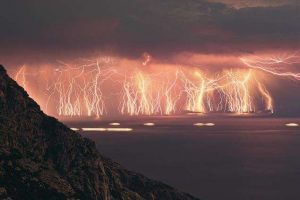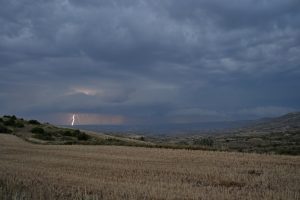The Catatumbo lightning is perhaps the strangest and most spectacular of all meteorological phenomena.

It is a natural phenomenon that produces abundant thunderstorms on the Catatumbo River, near Maracaibo. This phenomenon can be seen from April to November, from dusk to dawn, 240 nights a year. Due to its frequency and brightness it is visible from hundreds of kilometers away. For this reason, it is also known as “Faro de Maracaibo” (Maracaibo’s Lighthouse).

This wonder of nature is characterized by the continuous and almost silent appearance of lightning due to the hundreds of kilometers that are needed to observe the phenomenon. Its origin is in the particular orography of the place. The hot and humid wind from the northeast is forced to rise by the Mérida Mountain Range. There, it meets the cold air from the Andes, giving rise to the formation of cumulonimbus. Cumulonimbus are vertically developing clouds that are indispensable for the formation of thunderstorms. This, together with the methane that rises from the lake deposits and concentrates in the clouds, weakening the insulation, forms the electrical discharges of between 2 and 10 kilometers in height that are so characteristic of the area.

Thunderstorms generate a large amount of ozone. Catatumbo registers the highest concentration of electrical discharges on the planet, as certified by the Guinness Organization since January 28, 2014. However, it is very unlikely that this ozone will ascend to the stratosphere and regenerate the ozone layer.
In Spain, on a much smaller scale, we find the Sierra del Rayo, located in Teruel. This has annual averages of more than 35 days of thunderstorms. It can even reach up to 50 days in years when conditions have been favorable for its formation.


